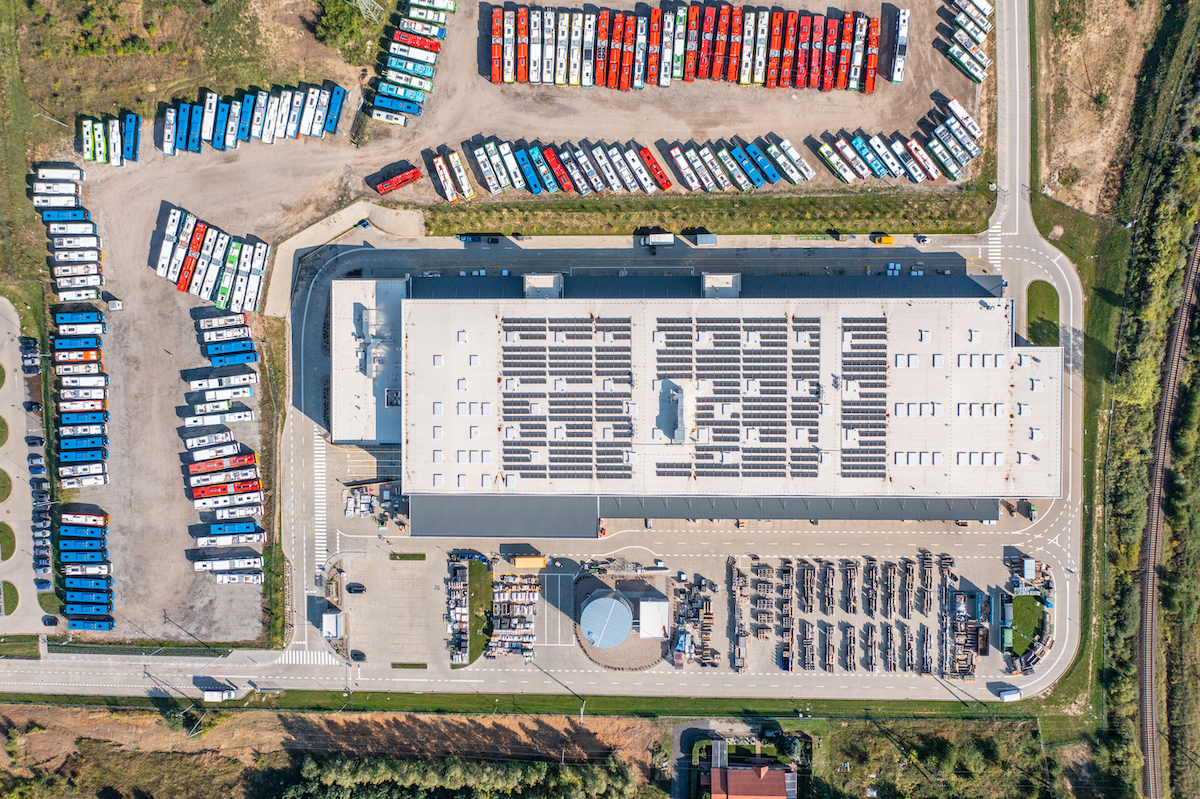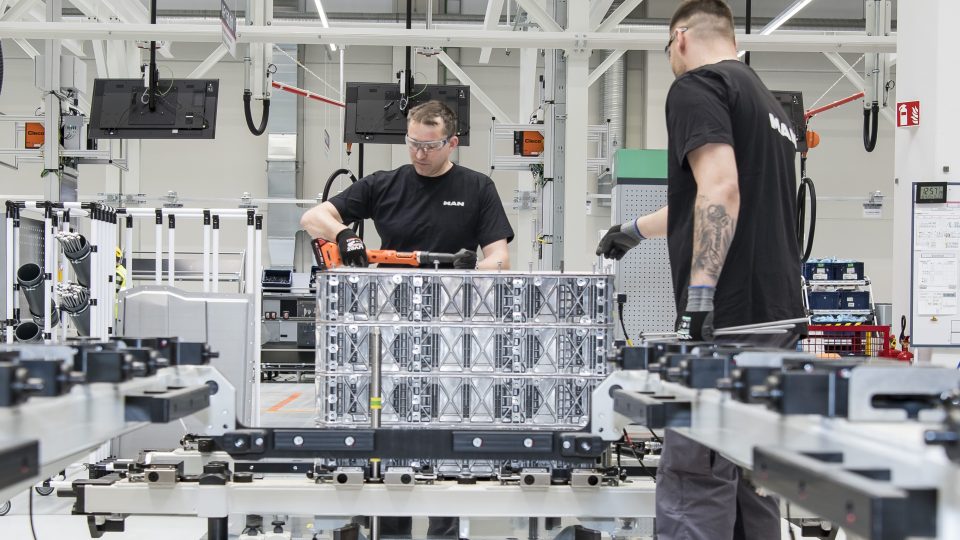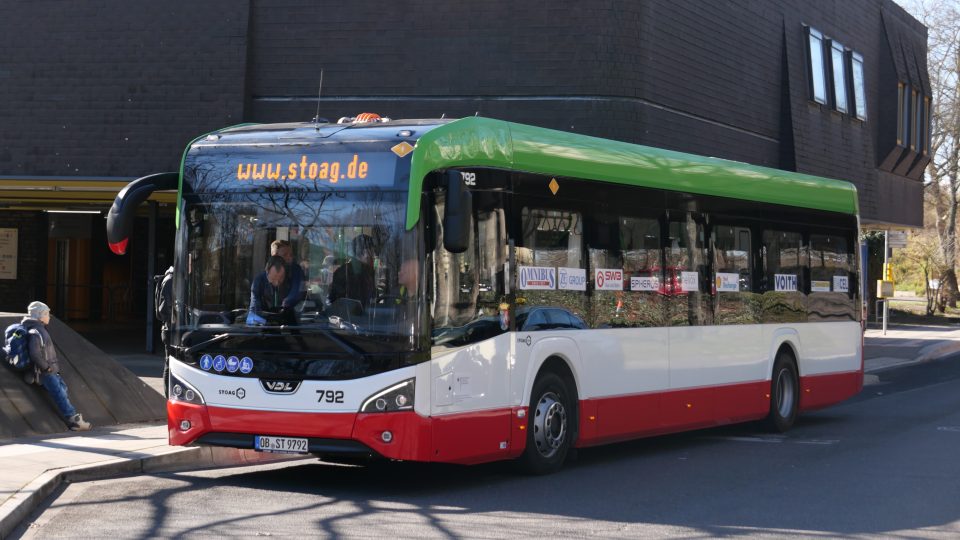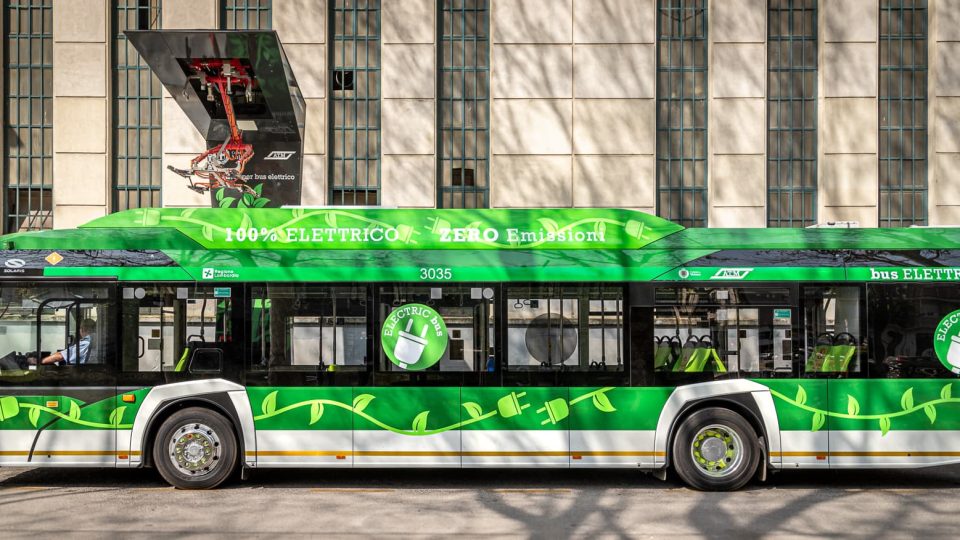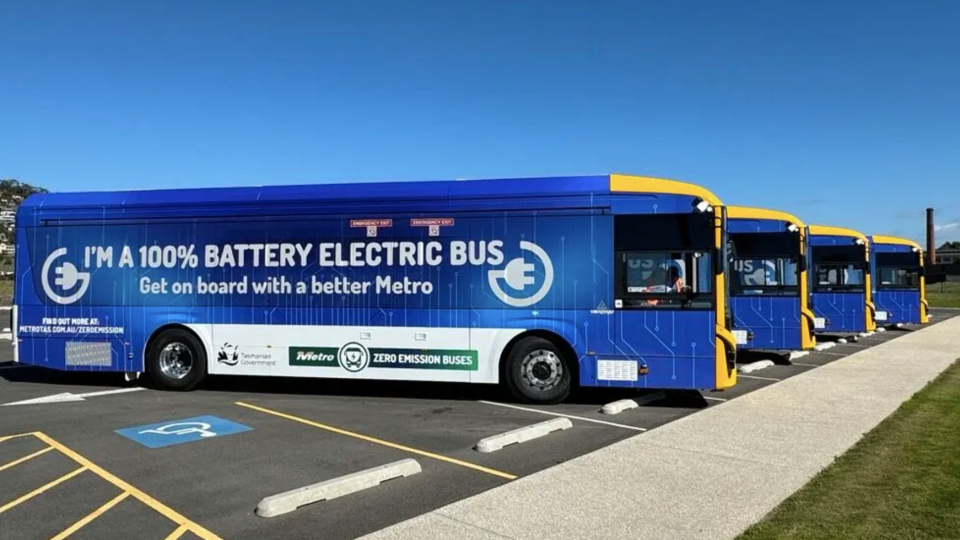Solaris opens new warehouse hall and charging park for e-vehicles in Bolechowo
Solaris inaugurated its new Warehouse Hall and an innovative Charging Park for e-vehicles on 29 September. The first consists in 10,000 m2 equipped with cutting-edge logistics systems and solutions, the second is a unique charging station for e-vehicles. These two latest investments by Solaris were launched at an official opening ceremony. Both the Warehouse Hall and the Charging Park have been built directly on the premises of the factory […]
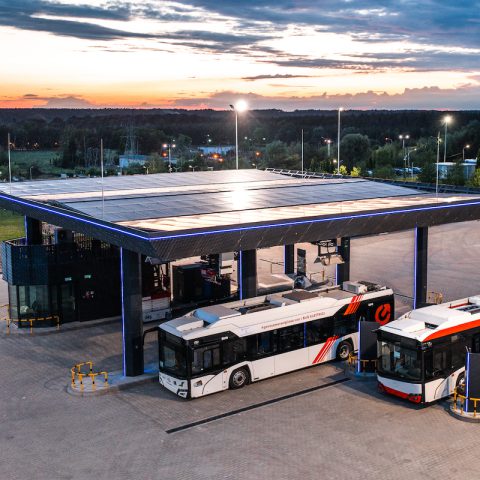
Solaris inaugurated its new Warehouse Hall and an innovative Charging Park for e-vehicles on 29 September. The first consists in 10,000 m2 equipped with cutting-edge logistics systems and solutions, the second is a unique charging station for e-vehicles.
These two latest investments by Solaris were launched at an official opening ceremony. Both the Warehouse Hall and the Charging Park have been built directly on the premises of the factory in Bolechowo, near Poznań, where the company’s headquarters are located.
Solaris new warehouse, with solar panels
The new Warehouse Hall has a surface area of 10,000 m2. It is equipped with a modern multi-level warehouse platform with an automated conveyor belt. Almost 25% of the total space of the Warehouse has been dedicated to office and social space. Advanced systems for smoke detection have been installed throughout the facility, and the equipment used in the new Warehouse has been fitted with special acoustic panels to dampen the noise generated by daily operations, Solaris explains.
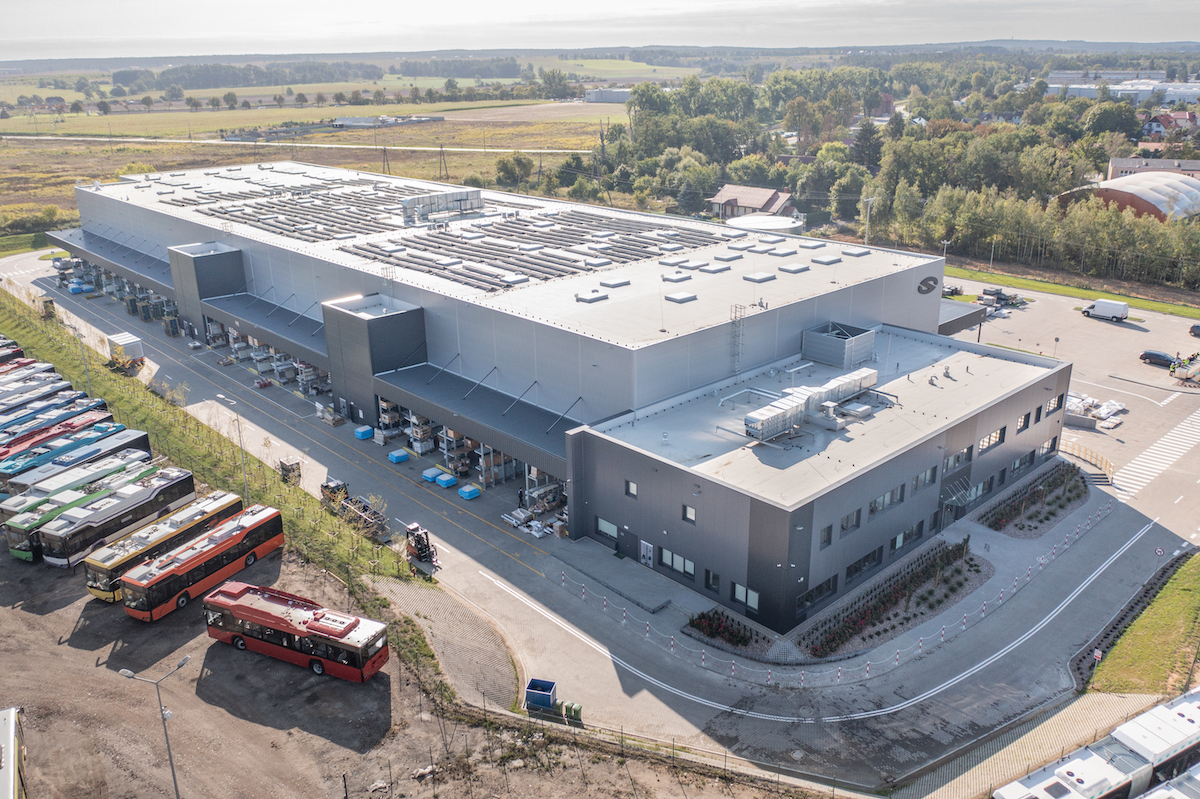
The new warehouse facility has a reinforced roof, with 572 photovoltaic cells with a total capacity of 260 kWp installed on it. In addition, 80 kWp charging stations have been erected on the site.
There are also plans to retrofit, among other buildings, the Delivery Hall and the new Service Workshop with photovoltaic panels, as well as to install photovoltaic cells on the parking shelters.
Solaris Charging Park: a central site for charging e-buses
The Charging Park is an innovative, multi-bay charging station for battery-powered vehicles: e-buses, hydrogen buses and trolleybuses. The Charging Park has been developed to demonstrate novel charging solutions for Solaris buses to our clients. In addition, it offers one more unique feature, manufacturer stresses: it enables Solaris to test new technologies and functionalities as regards the charging and discharging of e-vehicles.
The Charging Park consists of eight charging bays, pantograph mechanisms, plug-in charging stations, a section of the trolleybus network, an interactive kiosk with an LCD screen and a technical room.
This is the first charging park supporting the Vehicle-to-Grid (V2G) functionality in Poland, i. e. a bidirectional energy flow between vehicles and the grid. This technology makes it possible to flexibly charge and discharge buses. It allows to discharge buses for test purposes and to use them as mobile energy storage facilities, which leads to more effective cost management.
Covering an area of 5,000 m2 the Charging Park boasts charging systems produced by three suppliers: Medcom, Ekoenergetyka and ABB.
The first charging system consists of two independent plug-in chargers with a power output of 150 kW, each featuring V2G. This innovative solution has been implemented and delivered with full bi-directional capability (charging and discharging of bus batteries) for the first time ever in the Polish market and is one of the first of its kind in the European market.
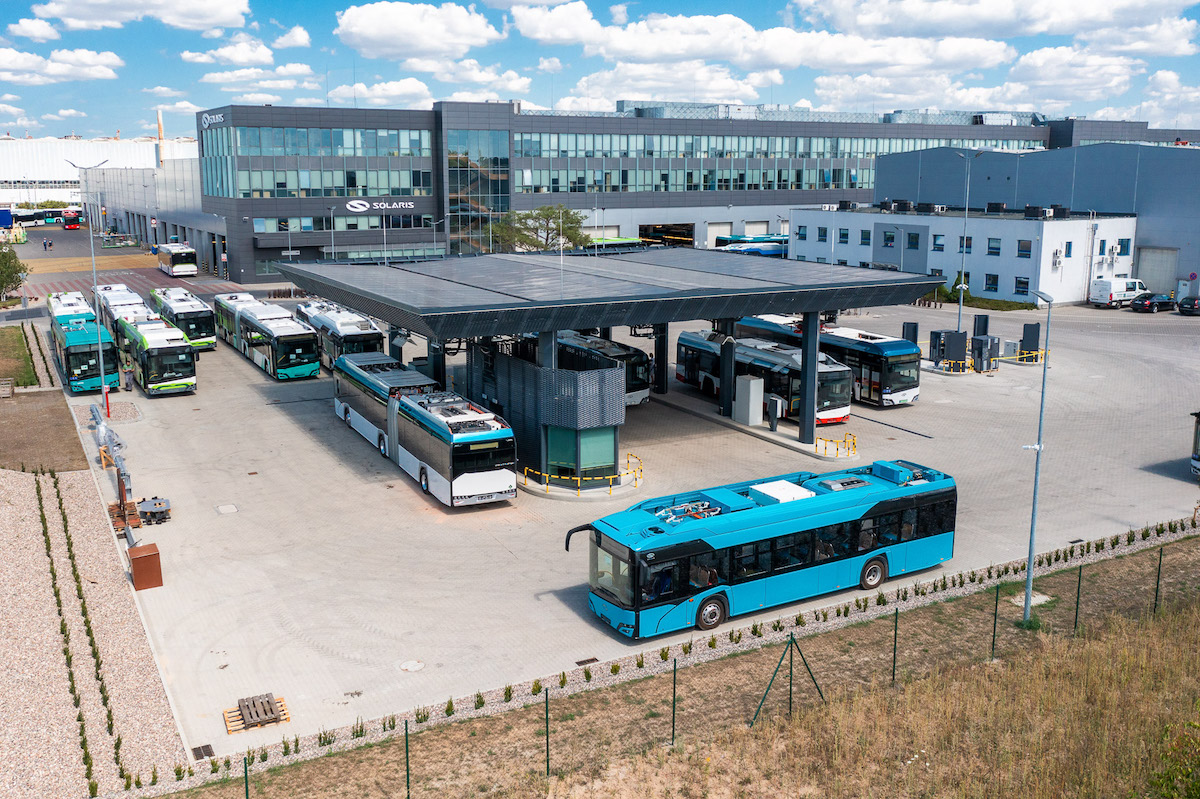
Charging systems in details
The second system deployed in the Charging Park is an innovative charger with eight charging points (with a power output ranging from 150 kW to 600 kW) that can charge three vehicles at the same time. This charging station is fitted with current collectors compatible with all pantograph types used by Solaris (a roof-mounted pantograph, an inverted pantograph, and a Ride&Charge system). In addition, the charger boasts three solutions for cable charging. The first one is a liquid-cooled plug-in HPC connector that enables the vehicle to be recharged with an output of up to 300 kW. With the two other charging connectors, buses can be charged with an output of up to 150 kW. The last charging system in the Park is based on a charger with four charging points with a total power output of 360 kW, which enables the concurrent charging of two buses each with up to 150 kW, or it will enable the charging of one bus with a power output of up to 360 kW in the near future (only via pantographs). It supports two plug-in outlets, a roof-mounted pantograph and an inverted one.
“As one of the biggest employers in the region, we are particularly committed to continually improving and optimising solutions in our factory. Our aim is to effectively boost the company’s potential and to respond accurately to the market’s fast-changing needs. Therefore, we are constantly investing in developing our products technologically and in improving our production process, as well as in creating new technologies that contribute to enhancing the quality of our work and boosting the competitiveness of our company”, said Dariusz Michalak, PhD. Eng., vice-CEO of Solaris Bus & Coach for R&D, Quality Assurance and Procurement.
